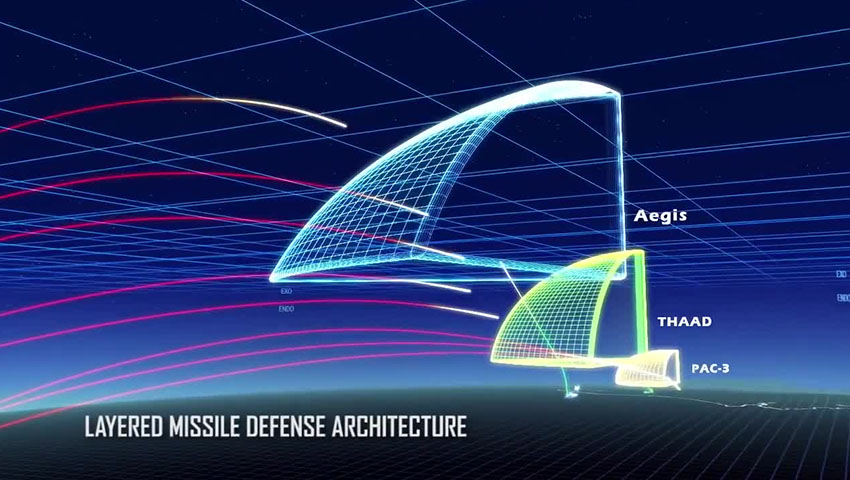As hypersonics transform the capabilities of contemporary strike missiles, the systems used to defend against such weapons will continue to evolve. Layered defensive measures, combining powerful search radars, advanced computer analysis, interceptor missiles and, increasingly, directed energy weapons serve as key components in both continental and expeditionary integrated missile defence networks.
To continue reading the rest of this article, please log in.
Create free account to get unlimited news articles and more!
"The rocket worked perfectly, except for landing on the wrong planet," Wernher von Braun said following the first successful rocket attacks against London in the dying days of the Second World War.
From the earliest days of cruise and ballistic missiles, the evolution of technology between defence and offence has been a game of cat and mouse, with technology empowering both attacker and defender serving to create a constant state of tactical and strategic flux.
The advent of multiple independently targetable re-entry vehicles (MIRV) during the Cold War and the rise of hypersonic ballistic and cruise missiles in recent years have constantly undermined efforts to develop a reliable, cost-effective and survivable missile defence system and capabilities. In response, the US, Russia, China, India, Israel and France have all invested heavily in developing a range of land, air and sea-based missile defence technologies and systems.
While fanciful programs like the Reagan administration's Strategic Defence Initiative (SDI) postulated the use of space-based systems, namely laser-armed satellites, as a cost effective and survivable missile defence system, the collapse of the Soviet Union and the costs associated with developing such technologies pushed even the US to the limits of its financial and industrial capabilities.
However, the complexity of missile variants, combined with speed, improved manoeuvrability and re-targetable systems has required a layered approach to tactical and strategic missile defence, adding both cost and complexity to missile defence countermeasures. Missile defence is broken down into three layers, each requiring different levels of technology and platform, namely:
- Tactical: Designed to counter short-range, tactical ballistic missiles designed to travel less than 1.5km/s. Tactical anti-ballistic missiles (ABMs) typically have short ranges, from 20-80 kilometres, and are designed to provide area defence for major infrastructure including cities, ports, airfields and forward-deployed military bases. Currently fielded defence systems include the US MIM-104 Patriot, Israeli Iron Dome and Russian S-300V systems.
- Theatre: Countering medium-to-intermediate range missiles designed to travel at approximately 3km/s providing defensive coverage across a localised region of military operations (typically a radius of several hundred kilometres). Currently fielded systems include the US Terminal High Altitude Area Defence (THAAD), Israeli Arrow and Russian S-400 systems.
- Strategic: Designed to counter long-range intercontinental ballistic missiles capable of travelling at approximately at 7km/s. These systems rely on a complex series of sensors, targeting computers and anti-ballistic missile systems to counter threats. Current examples include the Russian A-135 system responsible for the defence of Moscow and the US Ground-Based Midcourse Defence system responsible for defending the continental US from missiles launched in Asia.
Despite these clearly defined capabilities, the constantly evolving nature of missile systems, combined with the mobility and proliferation of capabilities among state and asymmetric-based threats, presents a series of challenges, mandating an equally agile and formidable response to protect critical infrastructure and forward deployed military capabilities from attack.
Australia's response
Australia's geographic isolation and size presents a series of operational and strategic challenges for implementing a layered system of continental defence, nevertheless, there has been an introduction of increasingly capable ballistic missiles throughout the region, most recently with announcements of a successful precision guided long-range ballistic missile by North Korea and the increasing capability of China's own ballistic and cruise missile systems.
However, the acquisition of key platforms like the recently announced National Advanced Surface to Air Missile System (NASAMS) as part of the $2 billion LAND 19 Phase 7B program, combined with the Aegis SPY-1D radars aboard the Hobart and Hunter Class vessels, establish the basis for a layered-national missile defence capability.
Building on these capabilities, AIR 6500 has been conceptualised as a 'system-of-systems' combining the data gathering, analysis and firing solutions of inter-service platforms like the F-35 Joint Strike Fighter, E-7A Wedgetail, P-8A Poseidon, Hobart Class and Hunter Class and the NASAMS.
AIR 6500 is a joint battle management system that will interconnect the many disparate platforms, systems and sensors across the air, land space, electromagnetic and cyber domains into a collaborative environment that provides shared situational awareness of the battlespace and the ability to rapidly plan responses to threats.
This investment will provide the foundation for an enhanced integrated air and missile defence system for the ADF, ensuring that the delivered system is able to fuse and share information to enhance the accuracy and speed of ADF's systems response to air and missile threats. The delivered architecture will have the flexibility for further enhancement to handle more complex threats and to integrate new technologies as they emerge.
The ADF will also acquire ground-based active electronically scanned array radars from around 2020 and expand Australia's access to air and space situational awareness information, including through space-based systems.
Get involved with the discussion and let us know your thoughts in the comments section below, or get in touch at

 Login
Login







